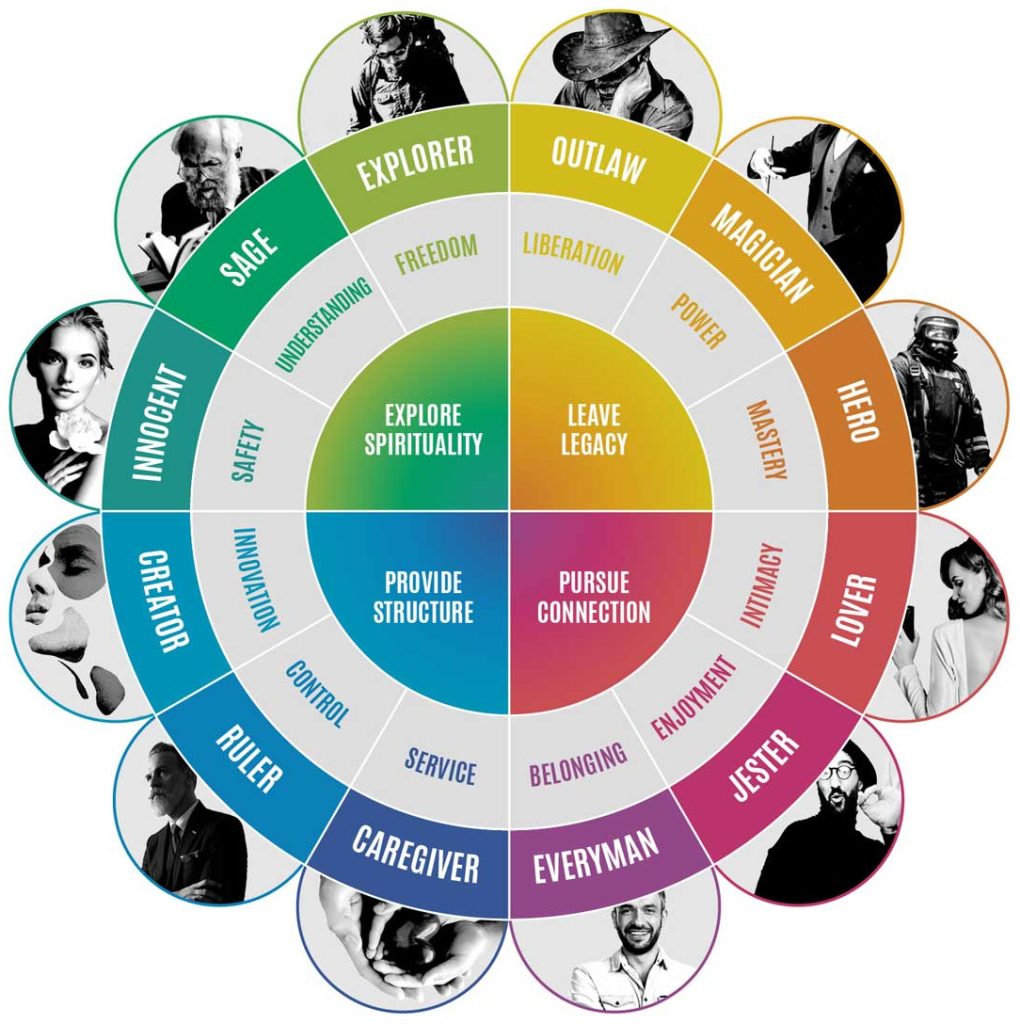Embark on the next stage of our exploration into the captivating realm of archetypes and their remarkable effect on customer experience, building on the knowledge acquired in our previous article: How Archetypes Influence Customer Experience: The Psychology of Consumer Behaviour.
Mystery shopping serves as a crucial research instrument for businesses aiming to enhance their customer experience. This method entails dispatching trained shoppers to assess various components of the experience, including customer service, product quality, and store ambiance. However, comprehending customer behavior is equally vital for improving customer experience. One efficient approach to achieve this is by employing archetypes in mystery shopping. This article delves into the importance of archetypes in mystery shopping and the ways they can shape customer behavior.

Imagine this scenario: You’re a restaurant owner looking to increase customer loyalty and ultimately, drive greater ROI for your business. You’ve conducted mystery shopping evaluations in the past, but you’re looking for a way to take your customer insights to the next level. That’s where the concept of brand archetypes comes in.
What are Archetypes?
Defining Archetypes: Archetypes are universal symbols and patterns of behavior that exist in every culture.
The Historical Roots of Archetypes: The concept of archetypes can be traced back to ancient civilizations, where they were used in art, literature, and mythology.
The Psychology of Archetypes according to Carl Jung: Swiss psychologist Carl Jung introduced the theory of archetypes in psychology, which posits that archetypes are a part of the collective unconscious.
The Psychology of Customer Behavior: Decoding the Enigma
Customers are intricate entities, influenced by countless factors that mold their behavior. Personal values, emotions, societal norms, and even external occurrences contribute to the choices they make when engaging with a business. Consequently, comprehending customer behavior is vital for businesses aiming to establish a positive and captivating customer experience.
The Interplay Between Customer Behavior and Business Performance: A Reciprocal Relationship
Customer behavior can significantly affect business performance. Content and satisfied customers are more inclined to become devoted clients, refer others, and share favorable reviews. Conversely, unhappy customers can damage a business’s reputation and financial health.
However, customers aren’t the only ones influencing business performance. The way a business functions, the products and services it provides, and the customer experience it offers all contribute to shaping customer behavior. By acknowledging this mutual influence, businesses can adopt a customer-centric approach that enhances both customer experience and business performance.
Factors Shaping Customer Behavior: The Secret to Mastering the Customer Experience
To craft an outstanding customer experience, businesses must grasp the factors that drive customer behavior. This involves pinpointing customer pain points, understanding their motivations and inclinations, and acknowledging their emotional reactions to various stimuli.
Moreover, businesses should evaluate the effects of social norms, culture, and external events on customer behavior. In the ever-evolving landscape of today, businesses that adapt to shifting customer behavior and expectations are more likely to thrive.
In summary, deciphering customer behavior is an ongoing process that demands businesses to remain in tune with their customers’ desires and requirements. By doing so, they can develop a customer experience that not only meets but surpasses expectations, resulting in loyal customers and heightened business performance.

The Power of Archetypes in Mystery Shopping: Unlocking the Secrets of Customer Behavior
When it comes to understanding customer behavior, archetypes hold the key. Archetypes are universal symbols that represent basic human desires and fears, and they play a significant role in shaping our behavior as customers. By understanding the archetypes that influence customer behavior, businesses can gain valuable insight into customer motivations and improve the overall customer experience.
The Implementation of Archetypes in Mystery Shopping Research: Unlimited Potential
Archetypes can be employed in numerous ways to enhance the customer experience in mystery shopping research. For instance, by utilizing the “Jester” archetype, evaluators can gauge how effectively a business creates a fun and lighthearted atmosphere. Meanwhile, the “Sage” archetype can help assess the extent to which a business offers expert advice and guidance to its customers.
Moreover, archetypes can be applied to examine the emotional reactions of customers to various stimuli, such as product displays or advertising initiatives. By comprehending how customers emotionally respond to different archetypes, businesses can develop more successful marketing campaigns and product presentations that connect with their customers on a deeper level.
In summary, archetypes serve as a potent instrument for businesses seeking to elevate the customer experience and decipher the mysteries of customer behavior. By identifying and understanding the archetypes that impact customer behavior, businesses can adapt their customer experience to fulfill their customers’ desires, resulting in a more appealing and satisfying experience. Thus, if you aim to enhance your mystery shopping research, don’t underestimate the power of archetypes.
The Application of Archetypes in Mystery Shopping Research: The Sky’s the Limit
Archetypes can be applied in a variety of ways to improve the customer experience in mystery shopping research. For example, by using the “Jester” archetype, evaluators can assess how well a business is creating a fun and lighthearted atmosphere, while the “Sage” archetype can be used to evaluate how well a business is providing expert advice and guidance to its customers.
Furthermore, archetypes can be used to evaluate the emotional responses of customers to different stimuli, such as product displays or advertising campaigns. By understanding how customers respond emotionally to different archetypes, businesses can create more effective marketing campaigns and product displays that resonate with their customers on a deeper level.
In conclusion, archetypes are a powerful tool for businesses looking to improve the customer experience and unlock the secrets of customer behavior. By recognizing and understanding the archetypes that influence customer behavior, businesses can tailor their customer experience to meet their customers’ desires and create a more engaging and satisfying experience. So, if you’re looking to improve your mystery shopping research, don’t overlook the power of archetypes.
Resonate with your target audience and drive loyalty by incorporating brand archetypes into your mystery shopping evaluations.
Examples of Archetypes in Mystery Shopping
The Innocent Archetype in Restaurant Branding – Customers who are drawn to the innocent archetype may be looking for a simpler time or a return to simpler values. When conducting mystery shopping evaluations, pay attention to details such as the overall cleanliness of the environment, the simplicity of the menu, and the use of nostalgic decor. By incorporating these elements into your brand personality, you can appeal to customers who value simplicity and purity.
The Explorer Archetype and Restaurant Customer Experience – Customers who are drawn to the explorer archetype may be looking for unique experiences or new challenges. When conducting mystery shopping evaluations, pay attention to details such as the diversity of menu offerings, the level of service provided, and the overall sense of excitement and adventure in the environment. By incorporating these elements into your brand personality, you can appeal to customers who value adventure and risk-taking.
The Sage Archetype and Educating Customers in Restaurants – Customers who are drawn to the sage archetype may be looking for a place to learn or gain knowledge. When conducting mystery shopping evaluations, pay attention to details such as the level of service provided, the expertise of staff members, and the availability of educational resources such as menus with detailed explanations of dishes. By incorporating these elements into your brand personality, you can appeal to customers who value wisdom and guidance.
The Jester Archetype and Creating a Fun Atmosphere in Restaurants – Customers who are drawn to the jester archetype may be looking for a place to have fun and enjoy themselves. When conducting mystery shopping evaluations, pay attention to details such as the overall sense of humor and playfulness in the environment, the level of entertainment provided, and the overall sense of joy and enjoyment in the atmosphere. By incorporating these elements into your brand personality, you can appeal to customers who value humor and playfulness.
Frequently Asked Questions (FAQs)
Q: Can archetypes be used in all types of businesses?
A: Yes, archetypes can be used in all types of businesses as they are universal patterns of behavior found in all cultures.
Q: How do you identify archetypes in customer behavior?
A: Businesses can use mystery shopping research to identify the archetypes that customers embody by observing their behavior and interactions with the business.
Q: Can archetypes be used to improve employee training?
A: Yes, businesses can use archetypes to improve employee training by providing insights into how different customers behave and how employees can respond to different behavior patterns.
Q: How can archetypes help businesses create personalized customer experiences?
A: Archetypes can help businesses create personalized customer experiences by identifying the needs and motivations of different customers and tailoring the customer experience to meet those needs.
Conclusion
Archetypes are not just a useful tool, they are a necessity for businesses looking to improve their customer experience. With the insights gained from understanding the archetypes that customers embody, businesses can create personalized experiences that forge stronger connections with their customers, develop targeted marketing strategies that speak directly to their customers’ motivations, and enhance their overall performance to remain competitive in a crowded market.
By integrating brand archetypes into your mystery shopping assessments, you can attain a more profound comprehension of your customers and their perception of your brand. This insight can be employed to develop a brand personality that connects with your customers on a deeper level, resulting in enhanced customer loyalty and ultimately, a higher ROI for your enterprise.
Now is the moment to elevate your customer experience by implementing archetypes in your business tactics. Your customers will value the meticulous attention, the personalization of their experiences, and the bond they forge with your brand. In exchange, your business will enjoy the advantages of increased customer loyalty, improved sales, and a more robust competitive edge. Don’t hesitate to incorporate archetypes into your mystery shopping assessments and propel your business to new heights.

We are always here to help! If you have any questions or would like to learn more about how ethnographic mystery shopping can benefit your business, please don’t hesitate to reach out to us. Our team is happy to provide consultation and guidance to help you get the most out of your research. You can contact us via email at enquiry@centricideas.com. We look forward to hearing from you!
